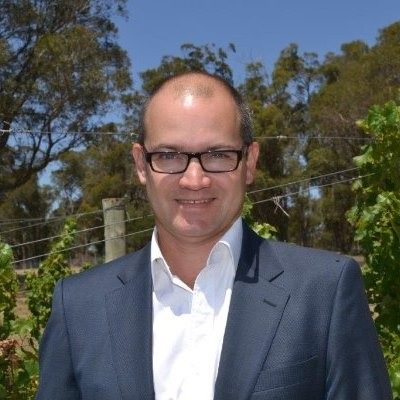So That’s What 30 Years Feels Like
Adrian Tucker | June 22, 2023

Originally published in November 2018
Last week, 12 souls who braved the inaugural year of the AIS/ACB Commonwealth Bank Cricket Academy gathered in Brisbane to mark the 30-year anniversary of what was, for us, and incredible year.
As part of two days of reminiscing we visited the current Centre of Excellence, based in Brisbane. The programmes and facilities for today’s athletes are light years ahead of that experienced by the original 15 of us back in 1988.
The current facility is incredible – lap pool, hot pool, cold pool, recovery room/MASH Unit, nets with pitches designed to replicate different conditions and a state-of-the-art gymnasium – I could go on. My overarching thought when touring the facilities was that they definitely would have helped me become a better athlete, but not necessarily a better cricketer.
Since 1988 there have been 389 athletes move through a programme that has morphed in every way imaginable. We were a squad of 15 who were farmed out to local Adelaide Grade Clubs, this moved to a squad of 24 where they essentially toured and played each other, and the current thinking is that more concentrated groups of elite talent in shorter bursts of high intensity training.
Everything is better and more professional now. Sports Science, diet, recovery and load management are managed and optimised. The programme we enjoyed was a distant forerunner of todays. So why in 2018 aren’t we building more adaptable cricketers?
30 years ago we weren’t too worried about what the state of Australian Cricket would be in 2018. We didn’t look too much past the next day. Train, train, play, tour.
We all thought about the directions our careers would take. Being part of “The Institute” guaranteed that we would be on the radars of state and national selectors when, or even before performances warranted. I never assumed that I would play for Australia but I thought that there was a navigable pathway to test cricket if I was good enough.
I’m sure that some of us did assume that long test careers awaited, but the game, any game, can be cruel. The closest we had to a can’t miss prospect was Stuart Law. Stuey didn’t miss – to the tune of 27000 First Class runs at 50.5. He did miss at the next level. 1 Test, 1 innings, 54 not out. If Stuey was playing today he would be the first batsman picked, and when Smith and Warner come back he would still be the second, especially away from home.
Todays selectors would kill for the opportunity to choose from any of the players on this list – Stuart Law, Michael Bevan, Martin Love, Jamie Siddons, Darren Lehmann and Brad Hodge. All these players had limited, if any exposure to test cricket, sometimes due to luck, sometimes to poor form at the wrong time, or perception, but the main reason was that there was an Australian Team full of all-time greats blocking their paths. Darren Lehmann averaged 57.8 in First Class cricket and played 27 tests. Michael Bevan averaged 57.3. Brad Hodge averaged 55 in Test cricket.
Sometimes a player can confound expectations as well. Jamie Cox was our second best performed batsman in the First Class game. He scored 18600 runs at 42.7 opening the batting, and he seemed to average twice that against NSW. One of our coaches once described him as a “specialist fieldsman”, and one legend of the game asked him one day after a dismissal if he had thought about golf. Well he was a bloody good fielder.
Did a year spent completely immersed in the game help us as cricketers? From my point of view the answer is yes and no. It helped my batting immeasurably, by the sheer repetition of hitting thousands of balls. By the second half of our season in Adelaide (mine spent with Adelaide Cricket Club) I was batting at near first-class level, the rest of my career I was a decent grade number 6-8 and occasional opener.
Bowling was a different story. The lack of a specialist leg-spin coach meant that the guidance of a steady hand who really understood leg-spin was missing. As well intentioned as the coaching staff were, all coaches tend to fall back onto the things they know (or think they know) the best, and their knowledge sets were not really applicable to my bowling.
There were longer term repercussions as well. Two years after The Institute I was semi-retired and living in England, working in the stock market and completely burnt out by cricket. I just didn’t want to play.
I don’t think I actually “got” leg spin bowling until around the age of 28, by which time my chances of a meaningful first-class career, or the chance of playing test cricket was effectively gone.
I looked around the table the other night and wondered if we were satisfied with what we got out of the game, compared to what we put into it. I don’t think there would be many resounding yes votes, but maybe a lot of qualified yeses.
As part of a media training exercise one day we were asked where we all thought we would be in 10 years. Queensland swing bowler Paul Carew replied “probably fishing”. Some dreams do come true.
The best of us, Law, Cox and wicket-keeper Darren Berry would reasonably lament the lack of opportunities at Test level. For the rest of us there were moments of greatness, Joe Scuderi, Shane George and Geoff Parker all shone at state level at different times. There were Sheffield Shield victories, and some long and imposing careers at club level, but ultimately the early promise was a little unfulfilled.
Maybe more important than any of that were the lifelong friendships that were made. For a couple of nights, a bunch of 48-50 year-olds told stories about the old days, and lamented hair and waistlines. We laughed about Geoff Parker hitting me over the stand at Woodville Oval half a dozen times, about late-night trips to the Blue and White Café in Adelaide because the food at St Marks College was so bad, and mostly about chicks. Some of us were very good at that game, some of us lamentably bad.
We spoke about sledging. No-one could remember much personal abuse, but plenty of chat aimed at getting inside an opponent’s head. The right level of chat is one of the things that makes the game fun – it does go for six hours, you can’t just stand around counting blowflies. Modern cricketers have spoken at length about not crossing “the line”, without defining where it is. Here’s where to find the line – would Keith Miller have said what I’m about to?
Most of all the conversation came back to cricket, a game that all of us loved, at least at one point. The Institute was the first real attempt at the development of elite talent that continues today with far greater levels of professionalism.
It may not have built great cricketers, but it certainly built great characters, and great blokes.








